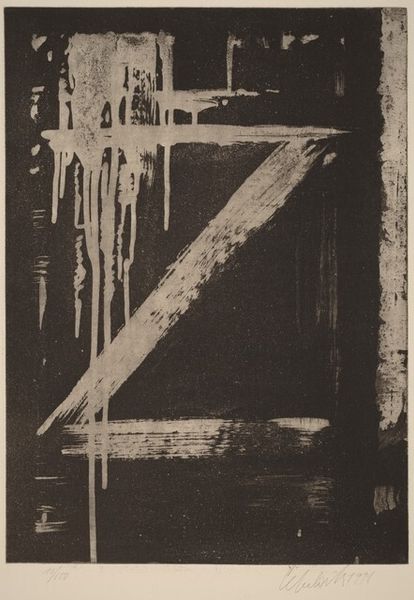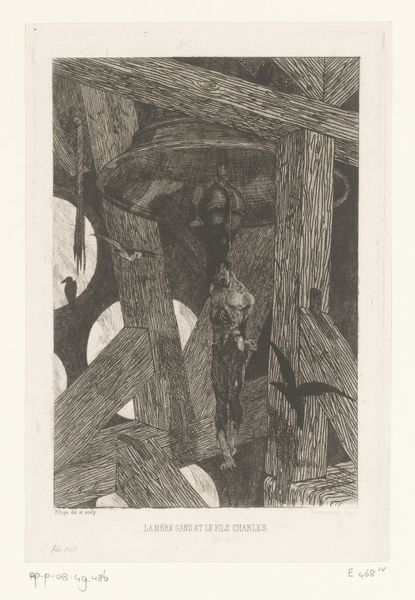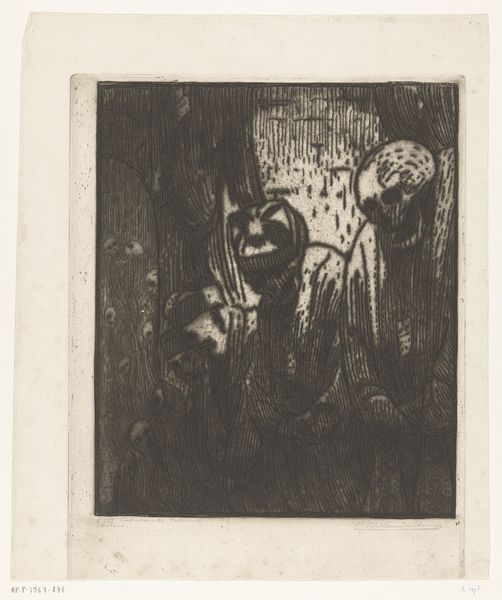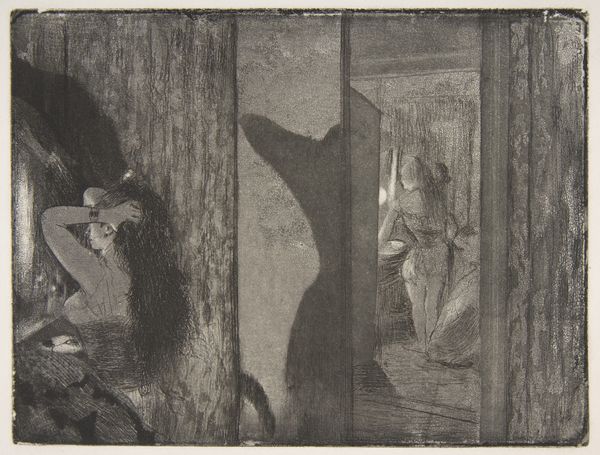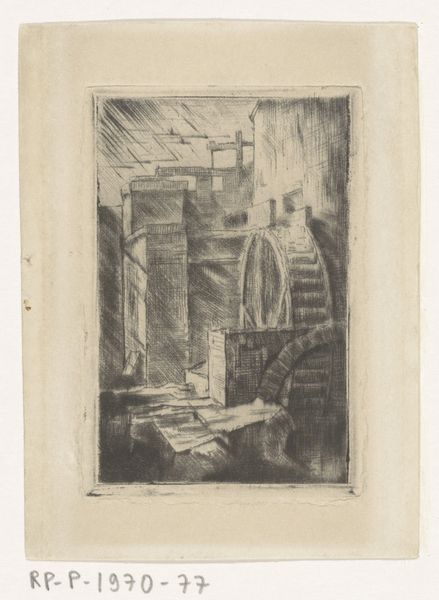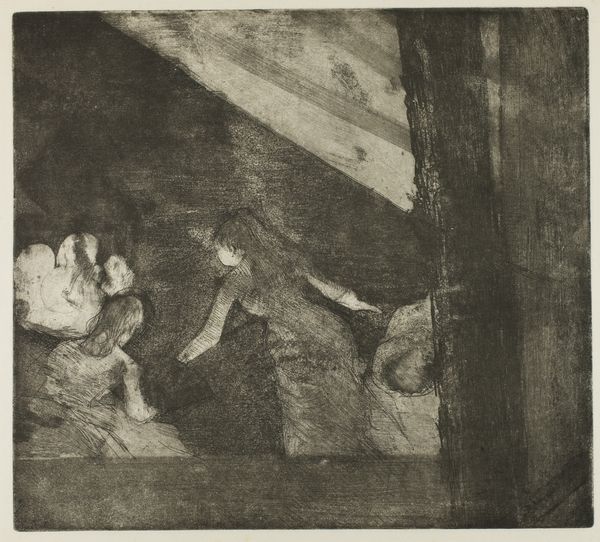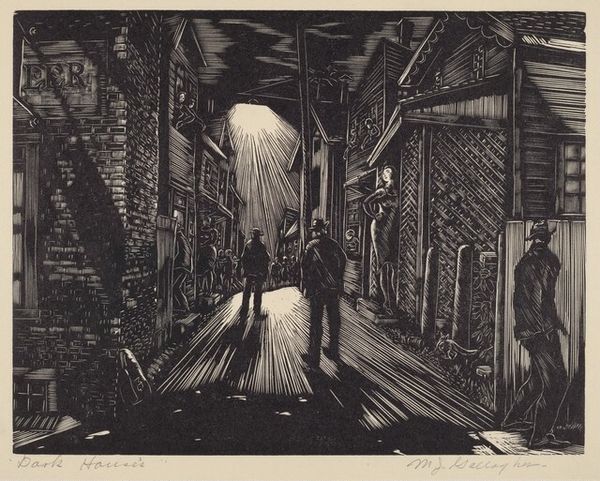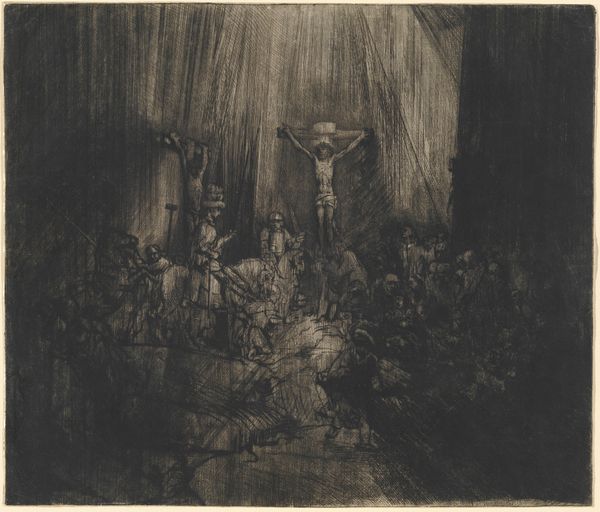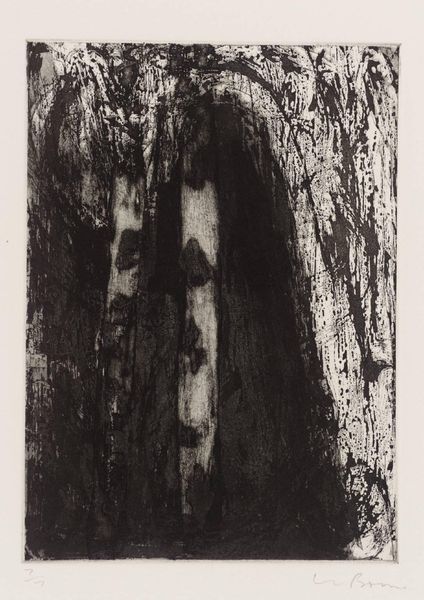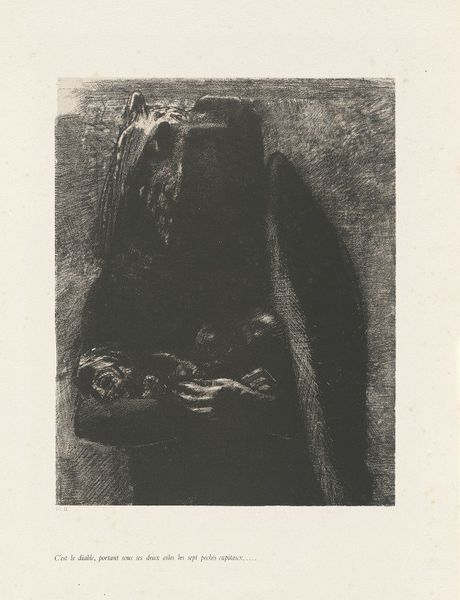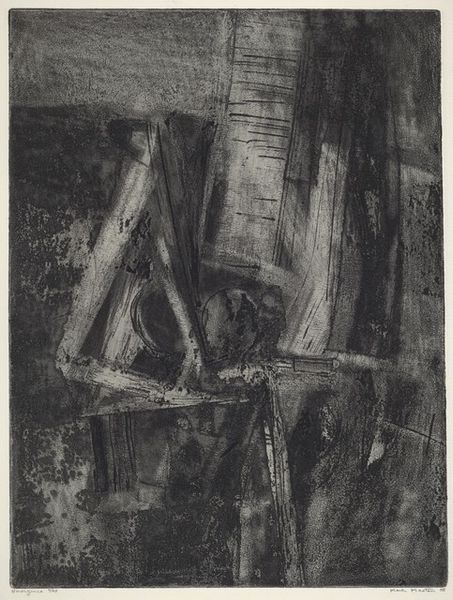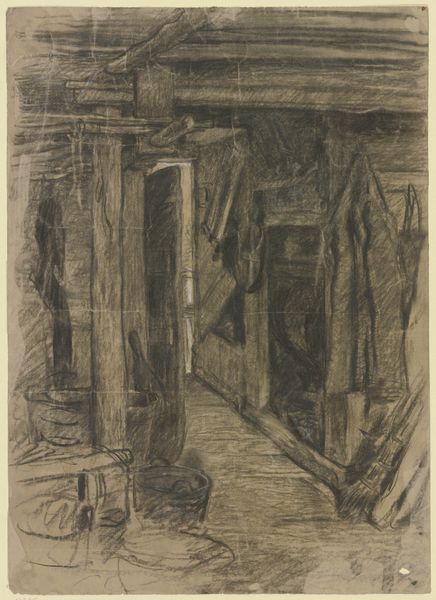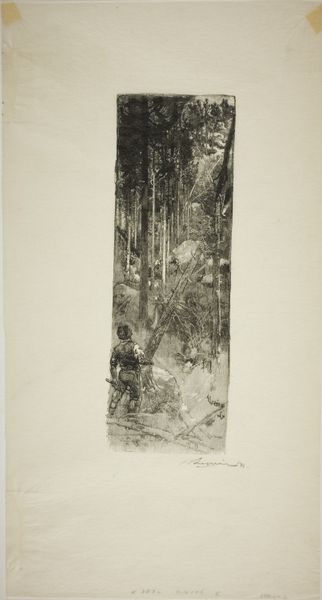
print, etching
# print
#
etching
#
landscape
#
abstraction
Copyright: National Gallery of Art: CC0 1.0
Curator: We're standing before Gabor Peterdi’s “Cliffs,” a 1961 etching. What are your initial thoughts? Editor: Stark. I see a world wrestling with division—the cliffs looming, but fragmented, burdened by visible stratification. It feels precarious, like a visual elegy for landscapes bearing the weight of historical forces. Curator: Yes, Peterdi's skill with texture creates this rugged topography. Notice the interplay of light and shadow—how the linear details form patterns, almost calligraphic, upon the cliff faces. The contrast lends dynamism, preventing it from feeling static. Editor: That stark contrast echoes a societal dichotomy. Considering this was created during the height of Cold War tensions, the composition speaks to the idea of seemingly insurmountable divides. Are the cliffs a metaphor for geopolitical barriers? Curator: Perhaps. Peterdi fled Hungary after the 1939 Nazi invasion. The disruption of place—homeland—becomes essential in decoding his landscapes. But I read it formally; as an experiment of shape and material. Etching lends itself to such stark contrasts. Editor: To separate material from the lived experiences risks stripping its voice, though. As refugees resettled, reshaping diasporic communities, those sharp vertical lines dividing dark from light could be seen to also reference power, marginalization. Curator: Even without external factors, the print presents an intellectual challenge in the manipulation of depth and space. The varying line weights and cross-hatching demand a rigorous seeing. Peterdi seems to relish formal play. Editor: Definitely a visceral image that mirrors interior disruptions of culture, but through the lens of sociopolitical events happening across borders during that era, "Cliffs" takes on new dimensions. What appears at first as form transcends boundaries, echoing history. Curator: Perhaps we each seek something different in its planes and surfaces, in its bold declarations of tone and shadow. Editor: It does prove how artistic form finds renewed meaning with each evolving narrative.
Comments
No comments
Be the first to comment and join the conversation on the ultimate creative platform.
